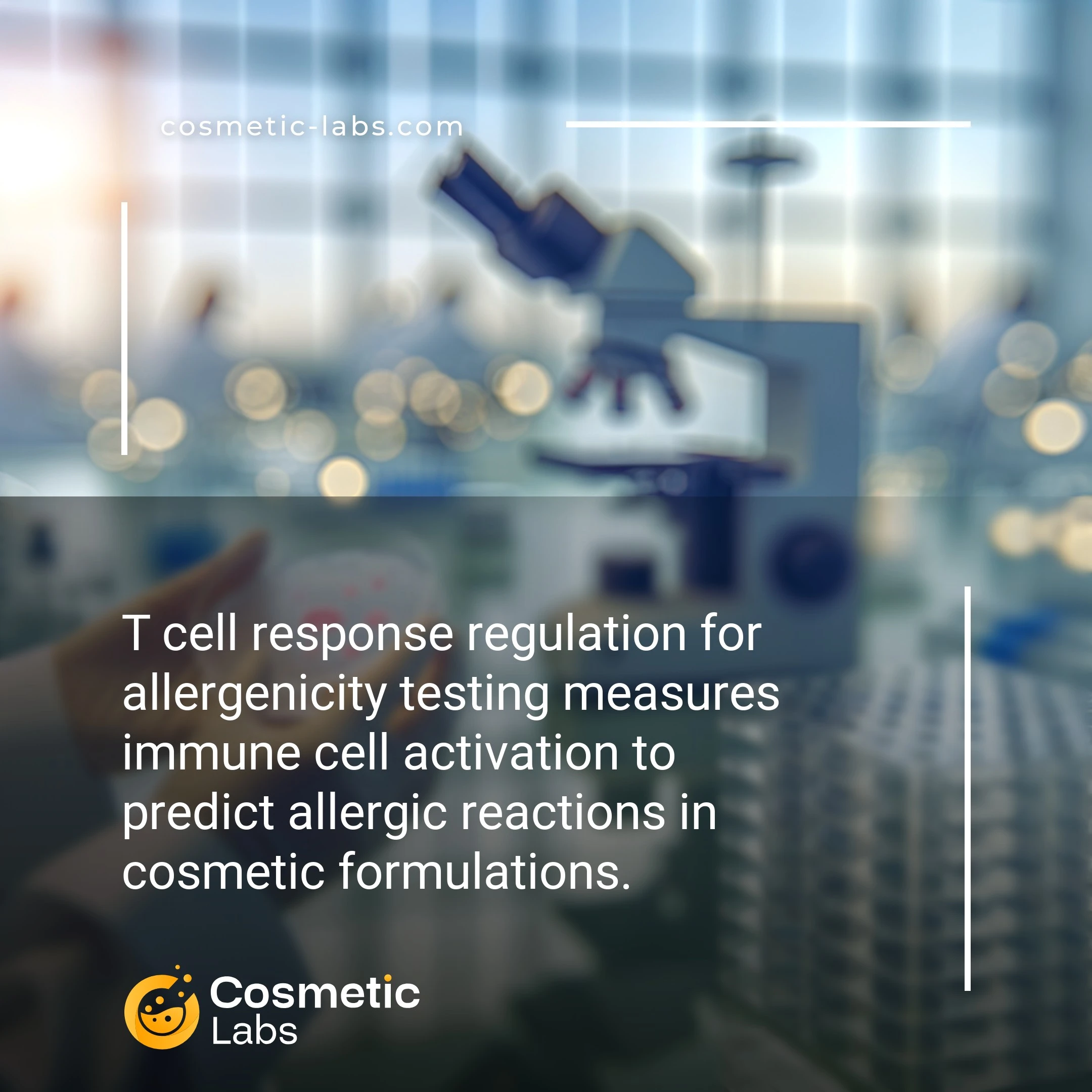T Cell Allergenicity Testing Services for Cosmetic Safety

What is T cell response regulation?
T cell response regulation for allergenicity testing is a preclinical assessment method that measures how cosmetic ingredients influence immune cell activation pathways. Labs use in vitro T cell assays to evaluate whether formulations trigger allergic responses before human exposure, typically analyzing cytokine release patterns and lymphocyte proliferation rates. This approach helps brands identify potential sensitizers early in development, reducing costly reformulation later.
Why do you need this service?
Cosmetic labs use T cell response regulation testing to predict ingredient reactions before product launch, helping brands avoid costly recalls and regulatory delays. This approach identifies potential sensitizers in new formulations through controlled immune cell activation studies, delivering predictive allergenicity data within 2-3 weeks compared to traditional patch testing timelines.
Who provides T cell response regulation services?
All cosmetic labs providing T cell response regulation services
There is no company providing these services at the moment.
T Cell Response Regulation Testing for Cosmetic Allergenicity Assessment
T cell response regulation testing measures how cosmetic ingredients affect immune system activation pathways. This testing method evaluates whether your formulations trigger unwanted T cell proliferation or cytokine release that could lead to allergic reactions in consumers.
Cytokine Production Analysis
Labs measure specific cytokine markers like IL-4, IL-13, and IFN-γ to identify potential allergens in your formulations. The testing process involves exposing T cells to your ingredients and tracking inflammatory responses over 24-72 hours.
Key markers analyzed include:
- Th1/Th2 cytokine ratios
- Regulatory T cell activation levels
- Pro-inflammatory mediator release
- Cell viability and proliferation rates
This data helps you identify which ingredients might cause contact sensitization before product launch.
Regulatory T Cell Function Assessment
Testing facilities evaluate how your cosmetic ingredients affect regulatory T cells (Tregs) that control immune responses. Disrupted Treg function often precedes allergic sensitization, making this a predictive safety marker.
The assessment covers:
- Treg suppression capacity testing
- FOXP3 expression analysis
- IL-10 and TGF-β production levels
Results show whether your formulation maintains immune balance or shifts toward allergenic potential. Connect with experienced labs on our platform to discuss T cell testing protocols for your specific product development needs.
Practical Applications of T Cell Response Regulation Testing
T cell response regulation testing applications provide cosmetic brands with actionable data to predict allergic reactions before products reach consumers.
New Ingredient Safety Assessment
Labs evaluate novel botanical extracts, synthetic peptides, and active compounds through T cell activation assays that measure immune system responses. These tests identify potential allergens within 5-7 days using human peripheral blood mononuclear cells (PBMCs).
Testing protocols examine cytokine release patterns, specifically IL-2, IFN-γ, and TNF-α levels. Results help formulators adjust concentrations or select alternative ingredients before clinical trials begin.
| Testing Method | Timeline | Key Markers | Application |
|---|---|---|---|
| PBMC Activation | 5-7 days | IL-2, IFN-γ | Novel ingredients |
| Mixed Lymphocyte Reaction | 3-5 days | CD4+/CD8+ ratio | Preservative systems |
| Dendritic Cell Maturation | 48-72 hours | CD86, CD83 | Fragrance compounds |
Formulation Optimization and Risk Assessment
Brands use T cell response data to optimize product formulations and establish safe usage levels. Testing reveals how ingredient combinations affect immune responses, particularly for sensitive skin formulations and anti-aging products with multiple actives.
Labs compare dose-response curves across different concentrations, helping brands determine maximum safe levels. This data supports regulatory submissions and reduces the risk of post-market allergic reactions.
Ready to validate your formulation’s safety profile? Connect with specialized labs on our platform that offer T cell response regulation testing tailored to your product development needs.
